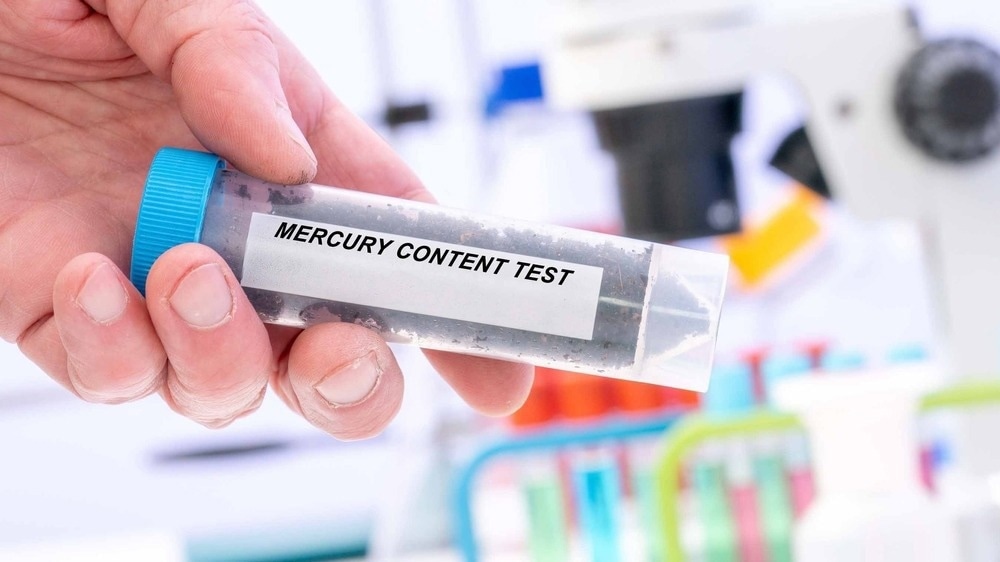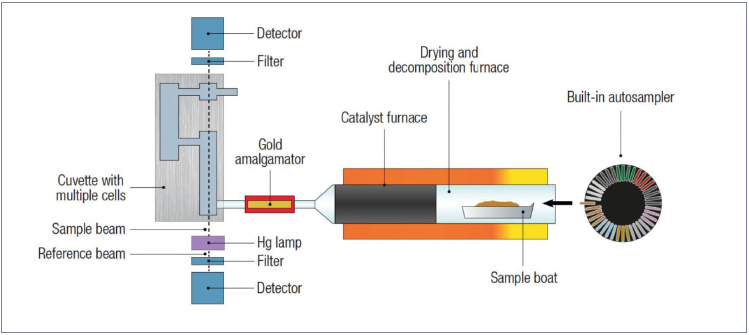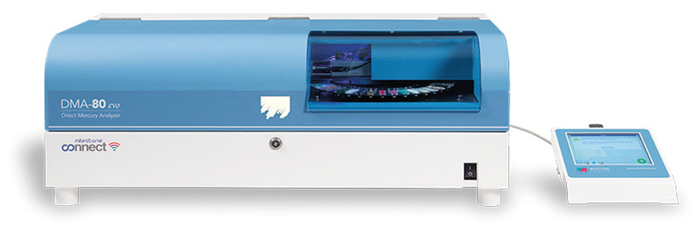This article provides a detailed look at the operational costs of the Milestone DMA-80 evo and CV-AAS/AFS, and how they compare to ICP-MS.
Managing a large contract laboratory while receiving increasing requests for mercury analysis is a common scenario in many laboratories. These labs typically rely on traditional mercury analyzers utilizing cold vapor atomic absorption or atomic fluorescence spectrometry (CV-AAA or AFS), ideal for liquid samples with low mercury content, such as drinking water and surface waters.

Image Credit: luchschenF/Shutterstock.com
However, when solid and other liquid samples are introduced, a dissolution step is required before analysis, often involving microwave digestion. Mercury’s high volatility may cause analyte loss and poor recoveries through these dissolution techniques without optimal digestion technology. This may result in sample reruns, impacting lab efficiency, operator time, and overall analysis cost.
For many laboratories, the workload often includes various environmental samples, making it extremely challenging to meet all requirements using a single technique.
The EPA Method 7471 is commonly used to measure total mercury in soils, sediments, bottom deposits, and sludge-type materials via cold vapor atomic absorption. However, it requires daily calibration and is susceptible to interferences from certain species, such as sulfide, chloride, and copper ions.1 These interferences necessitate oxidizing and reducing agents to ensure the species are in the correct oxidation state before the mercury vapor is reduced and swept into the absorption cell.
Consequently, the EPA method explicitly states that it must be performed by experienced and trained personnel, with each analyst required to demonstrate the ability to produce acceptable results using this method.
A novel approach, Direct Mercury Analysis (DMA), offers labs an alternative by directly determining mercury in solid and liquid samples. This method utilizes the principle of thermal decomposition combined with amalgamation and atomic absorption.
This technique involves thermally decomposing the sample in a metallic or quartz boat, which is then introduced into a quartz tube. A continuous air flow carries the decomposition products through a hot catalyst bed, effectively trapping halogens, nitrogen, and sulfur oxides. All mercury species are then reduced to elemental mercury (Hg0) and released into a gold amalgamator where the mercury is selectively trapped, heated, and subsequently directed into a fixed wavelength atomic absorption spectrophotometer for detection.
Note: A more thorough explanation of the fundamental principles of this technique is available in Figure 1 and the reference section.2
Cost of analysis
With this analytical scenario in mind, a closer examination of the cost of analysis comparison between a dedicated mercury analyzer and one using Direct Mercury Analysis is warranted.
It is also important to note that three approved methods incorporate this approach: EPA Method 7473 for solid samples and liquids (3), ASTM method D-7623-10 for total mercury in crude oil using combustion gold amalgamation and cold vapor atomic absorption, and ASTM 6722-01 for coal combustion products.4,5 The EPA method specifies that total mercury can be measured in a laboratory or field setting without sample chemical pretreatment in under five minutes.
Some laboratories may anticipate a substantial workload of samples over a short period, making this technique seem ideal for meeting such demands. However, it may be difficult to decide whether the potential cost savings can justify the investment in a new Direct Mercury Analysis instrument.
This scenario reflects the challenges many laboratories encounter when the demand for mercury analysis increases substantially. The decision often comes down to staying with traditional dedicated mercury techniques, such as CV-AAS/ AFS, shifting some of the samples over to the ICP mass spectrometer (ICP-MS)—which is primarily utilized for drinking water and wastewater analysis—or investing in the direct mercury technique.
The next section of this article compares the operational costs of the Milestone DMA-80 evo and CV-AAS/AFS, evaluating their performance relative to ICP-MS to assess the feasibility of the investment.
Note: This comparison focuses on similar sample types that require some sample pretreatment or preparation (e.g., solids or liquids requiring digestion).

Figure 1. A schematic of the DMA-80 evo direct mercury analyzer. Image Credit: Milestone S.r.l.
Productivity and cost comparison
To fully understand the differences, it is important to deconstruct the dedicated mercury analysis methods into their individual components: pre-digestion handling, sample digestion, post-digestion handling, and sample analysis.
The associated costs for each step are then compared with the DMA-80 evo method. Table 1 provides a detailed cost breakdown for typical sample preparation using a dedicated CV- AAS/AFS analyzer, while Table 2 highlights the productivity comparison.
A few points to note: the prices and costs presented are averages in the United States derived from publicly accessible data. Explanations for each data set are provided in the numbered footnotes. The comparison assumes 40 samples per day, which is the average number of samples that can be run by a conventional CV-AAS/AFS analyzer, factoring in the time available after the sample preparation/digestion has been carried out (as detailed in the productivity comparison in Table 2).
Table 1. Cost of Sample Preparation for a Dedicated CV-AAS/AFS Analyzer. Source: Milestone S.r.l.
| SAMPLE PREPARATION COSTS FOR 40 SAMPLES |
| |
Labware cost per
40 samples1 |
Operator cost
per 40 samples2 |
Total cost
for 40 samples |
| CV-AAS/AFS |
$ 38 |
$ 36 |
$ 74 |
Milestone
DMA-80 evo |
- |
- |
- |
1 Reagent and disposable flask costs required for 40 samples (equivalent to $0.95/ sample)
2 Operator time required for pre- and post-digestion steps: weighing, adding reagent, vessel assembly/disassembly, and dilution (filtering not included). Equivalent to 72 min. of an operator time ($30/hour).
Table 2. Sample Productivity Comparison of CV-AAS/AFS vs. the DMA-80 evo analyzer. Source: Milestone S.r.l.
| SAMPLE PRODUCTIVITY COMPARISON |
| |
Sample preparation
time1 |
Operator handling
time2 |
Analysis time per
samples3 |
Total samples
per day |
| CV-AAS/AFS |
120 min |
72 min |
6 min |
48 |
Milestone
DMA-80 evo |
- |
- |
6 min |
80 |
1 Digestion time (heating and cooling) for 40 samples, obtained by running two digestion cycles with a closed-vessel microwave digestion system.
2 Time required for the operator to prepare a total of 40 samples (weighing, reagents addition, vessels assembly/ disassembly).
3 Average time required by the instrument to perform the analysis. CV-AAS/AFS time might change based on the system configuration, volume of sample introduced, and other factors.
Note: It is important to highlight that these times exclude sample pretreatment. For instance, although homogenization may be necessary for both techniques, it has not been factored into the calculations.
Table 3 outlines the costs related to the analysis process for a dedicated CV-AAS/AFS analyzer compared to the DMA-80 evo.
Note: The CV-AAS/AFS techniques require daily calibration and fresh standards and reagents. In contrast, the DMA-80 only requires a calibration check, either with a standard solution or a certified reference material (CRM). The expenses associated with these tasks are detailed in the numbered footnotes.
Table 3. Cost of Sample Analysis for a Dedicated CV-AAS/AFS Analyzer compared to the DMA-80 evo. Source: Milestone S.r.l.
| ANALYSIS PROCESS COSTS COMPARISON |
| |
Reagents and rinse
solutions costs1
(40 samples) |
Operator time cost2
for reagents preparation
(40 samples) |
Operator time cost
for analysis3
(40 samples) |
Total costs
(40 samples) |
| CV-AAS/AFS |
$ 13.72 |
$ 7.50 |
$ 4 |
$ 25.22 |
Milestone
DMA-80 evo |
$ 0.16 |
- |
$ 10 |
$ 10.16 |
1 Reagents required for the analysis (HCl typically ultrapure, ascorbic acid, SnCl2, distilled water); rinse solution for cleaning (HCl typically ultrapure, distilled water). DMA-80 evo requires only the replacement of the sample boat every 1000 runs (equivalent to $0.004 for each analysis)
2 Cost of the operator to freshly prepare the reagents every day.
3 Operator cost to set up the analysis, equivalent to 8 minutes for CV and 20 min for DMA-80 evo (including sample weighing).
To put this into perspective, the overall cost comparison between the CV-AAS/AFS and the DMA-80 evo system is displayed in Table 4, which represents the total of the individual data sets from Tables 1-3. The comparison is based on 40 samples per day, though it is worth noting that the DMA-80 evo system can handle up to 80 samples per day, compared to a maximum of 48 samples by CV-AAS/AFS. This results in a 67% increase in productivity.
The cost breakdown for a typical laboratory processing 5000 samples per year (equivalent to carrying out mercury analyses for 6 months of the year, or 125 days) is provided to make the comparison more relevant for high sample workloads. The Milestone DM-80 evo offers an 89.8% savings over the CV-AAS/AFS system.
Table 4. Overall cost comparison breakdown of sample preparation, digestion and analysis for 40 samples. Source: Milestone S.r.l.
| TECHNIQUES FOR MERCURY DETERMINATION COST COMPARISON ON 40 SAMPLES |
| |
CV-AAS/AFS |
Milestone DMA-80 evo |
Sample preparation costs for
40 samples1 |
$ 74 |
- |
Reagents preparation and
related operator time costs for
40 samples2 |
$ 21.22 |
$ 0.16 |
Operator time cost for the
analysis of 40 samples |
$ 4 |
$ 10 |
| Total costs for 40 samples |
$ 99.22 |
$ 10.16 |
| Total cost for 5000 samples |
$ 12,402.50 |
$ 1,270 |
DMA-80 evo cost saving as %
of CV-AAS/AFS cost |
- |
89.8% |
1 Sample preparation (digestion) costs: reagents, flasks for digested solution and operator time
2 Reagents, rinse solution and operator time costs related to the analysis
It is also important to note that additional expenses for a cold vapor system may include nitrogen and argon, which are required for CV-AAS and CV-AFS, respectively. It would be reasonable to factor in these costs, but due to variations in instrument design and volumes used, they will not be included in this evaluation.
On the other hand, the DMA-80 evo operates with an air compressor, typically purchased with the instrument, and does not incur any gas-related operational costs.
To complete this evaluation, the analytical capabilities of ICP-MS, which is frequently used for conducting mercury determinations, will be compared.
A comparison with ICP-MS
Numerous studies have compared the DMA-80 evo with ICP-MS, highlighting the limitations shared between CV-AAS/AFS and ICP-MS, primarily because both are solution analysis techniques.
As a result, the lengthy sample preparation steps to get difficult samples into solution and their impact on productivity will be quite similar, as will the time needed for daily tasks such as instrument set-up, calibration, QC checks, routine maintenance, and cleaning. Both techniques involve using hazardous waste chemicals, acids, and solutions, all of which must be disposed of safely and environmentally responsible.
Mercury determination using ICP-MS is notorious for its memory effects and carryover, as it can stick to the walls of the sample container, the peristaltic pump tubing, and the surfaces of the ICP-MS sample introduction components.
Long washout times are typically required to mitigate this to ensure the previous sample is cleared from the sample line. This issue can be minimized by adding a few ppm of gold, which acts as a potent oxidizing agent to convert the mercury to the mercuric ion. This prevents it from being reduced to elemental mercury, lost to the atmosphere, or absorbed into the sample line. The problem worsens if the solutions are left for extended periods before analysis.
An alternative method involves adding approximately 1% HCl during the sample preparation or digestion stage. The HCI binds with the mercury and helps maintain it as a soluble complex ion instead of the easily reduced free ion. It is also advantageous to incorporate the HCl into the diluent and the rinse solutions to assist in moving the mercury through the sample introduction system while preventing it from sticking to the sides.
Ultimately, mercury is typically measured independently when carrying out determinations at low levels with ICP- MS. This is due to washout issues and because adding chloride ions to the samples could negatively affect the other analytes. Therefore, measuring mercury in a multielement run is not recommended, especially if a rapid sampling system with switching valves is used for high sample throughput.
If samples contain high levels of mercury, sample-to-sample contamination may be a concern with ICP-MS. To address this, the sample may need to be diluted, which not only degrades detection capability but, in extreme cases, may necessitate cleaning the sample introduction components with a gold/hydrochloric acid solution or even replacing them. These actions all significantly impact sample throughput and overall productivity.
The DMA-80 evo (Figure 2) is often used as a complementary technique to ICP-MS to prevent contamination issues and the associated extra costs.

Figure 2. Milestone’s DMA-80 evo direct mercury analyzer. Image Credit: Milestone S.r.l.
Final thoughts
With over 3000 Milestone DMA-80 systems installed globally, Direct Mercury Analysis has established itself as a valuable alternative technique to CV-AAS/AFS and ICP-MS for mercury determinations. It enables the direct analysis of solids and liquids, regardless of the matrix or concentration range.
Its streamlined operation, easier workflow, minimal sample handling, and long-lasting calibrations make it particularly appealing for remote field-based studies and laboratories lacking advanced sample preparation and digestion procedures.
The ability to directly introduce the sample into the instrument minimizes contamination risk, making it well-suited for operators with little experience in working in the ultra-trace element environment.
This study has shown that the DMA-80 evo system provides substantial cost savings of nearly 90% per sample compared to traditional CV-AAS/AFS methods. This could result in the instrument paying for itself over a very short period, especially for laboratories with a high sample workload.
References and further reading
- US EPA, O. (2019). EPA Method 7471B (SW-846): Mercury in Solid or Semisolid Wastes (Manual Cold-Vapor Technique). (online). Available at: https://www.epa.gov/esam/epa-method-7471b-sw-846-mercury-solid-or-semisolid-wastes-manual-cold-vapor-technique (Accessed 1 Apr. 2023).
- The Benefits of Direct Mercury Analysis: A Technology Review. (online) Available at: https://www.labx.com/resources/the-benefits-of-direct-mercury-analysis-a-technology-review/265.
- US EPA, O. (2019). EPA Method 7473 (SW-846): Mercury in Solids and Solutions by Thermal Decomposition, Amalgamation, and Atomic Absorption Spectrophotometry. (online). Available at: https://www.epa.gov/esam/epa-method-7473-sw-846-mercury-solids-and-solutions-thermal-decomposition-amalgamation-and.
- ASTM. (2020). Standard Test Method for Total Mercury in Crude Oil Using Combustion-Gold Amalgamation and Cold Vapor Atomic Absorption Method. (online) Available at: https://www.astm.org/d7623-20.html (Accessed 4 Feb. 2025).
- ASTM. (2017). Standard Test Method for Total Mercury in Coal and Coal Combustion Residues by Direct Combustion Analysis. (online) Available at: https://www.astm.org/d6722-01.html (Accessed 4 Feb. 2025).
About Milestone S.r.l.
Milestone was established in 1988 as the first specialized laboratory instrument manufacturer focusing on advanced microwave technology for sample preparation. Today we hold over 50 patents and have over 20,000 global users spanning across government, academic, contract, and manufacturing industries. Milestone’s headquartered is in Italy with offices in the Unites States, China, Japan, and Korea. The R&D and manufacturing sites are in Germany (MLS) and Switzerland (MWS), along with the offices for Austrian, German and Swiss markets. We have grown as advanced microwave technology manufacturer operating worldwide through a network of over 100 exclusive distributors, all providing our customers premium application and service support.
The key to Milestone’s technological leadership lies in bringing together individuals from diverse scientific and engineering disciplines to solve real world problems with innovative microwave instrumentation. The excellent support of the Application Team through all these years has highly contributed to the success of our laboratory instruments and our company. All our products are manufactured, assembled and checked by Milestone Production Department according to ISO procedures, to ensure they fully satisfy the needs of our customers.
Milestone has UNI EN ISO 9001:2015 certification representing international standards for quality management in TÜV Rheinland - a global, multi-accredited organization accepted by the majority of the world.

This information has been sourced, reviewed and adapted from materials provided by Milestone S.r.l..
For more information on this source, please visit Milestone S.r.l.